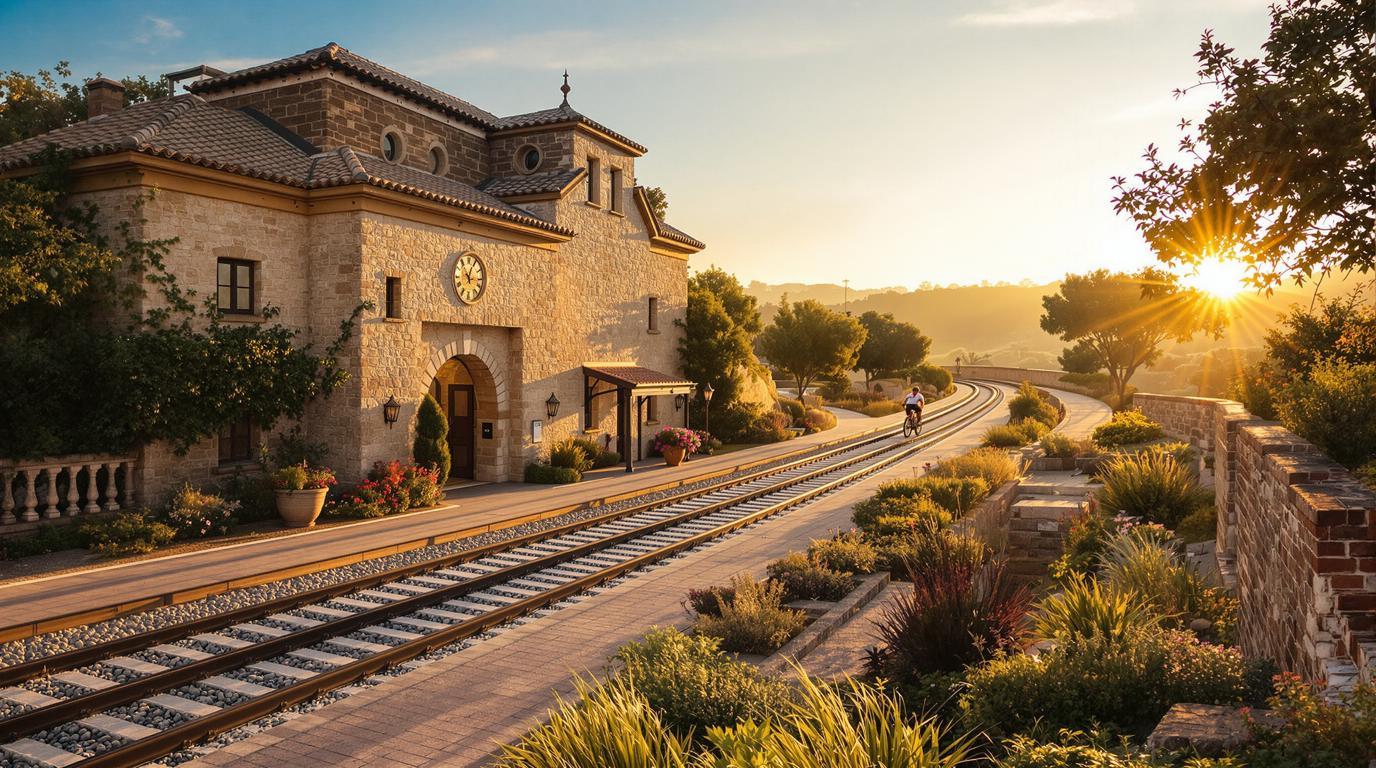When the train tracks fell silent in tiny Xerta, locals transformed their abandoned station into something remarkable. Today, this sleepy Spanish village in Catalonia’s Tarragona province has become an unexpected haven for travelers seeking authentic experiences away from Barcelona’s crowds. As dawn breaks over the Ebro River and golden light spills across centuries-old olive groves, visitors discover why this hidden gem deserves a spot on Spain’s must-visit list.
The ancient waterworks that changed a civilization
Xerta’s most impressive monument isn’t a cathedral or palace but a 15th-century hydraulic marvel. The Assut de Xerta, an ingenious dam system, has irrigated this fertile valley for over 500 years, transforming what would be arid land into Spain’s garden.
“Our ancestors built these channels by hand, stone by stone. They’re still functioning exactly as designed five centuries later,” explains Josep Martí, whose family has farmed olives near the dam for generations. “It’s living history you can touch.”
Where abandoned railways become pathways to adventure
The former Estació de Xerta now serves as headquarters for one of Spain’s most delightful outdoor experiences. Rent a bike here and pedal the Val de Zafán-Terres de l’Ebre greenway, a 120km converted railway cutting through tunnels, over bridges, and past landscapes that seem plucked from a painter’s imagination.
Unlike Africa’s more exotic destinations, Xerta offers accessible adventure without sacrificing authenticity. The gentle grade of this former railway makes it perfect for cyclists of all abilities.
A church where time stands perfectly still
Push open the heavy wooden door of Parroquia De L’assumpció I Sant Martí, and you’ll step back centuries. This unassuming church harbors architectural details and religious artifacts that would draw crowds in bigger cities. Here, you’ll likely have the echoing space entirely to yourself.
The golden elixir that defines a culture
Xerta’s surrounding olive groves produce some of Spain’s most prized oil. Visit the ecological mill where ancient trees yield liquid gold through methods both traditional and modern. Similar to France’s specialized food producers, these artisans maintain traditions while embracing sustainability.
“Our olive trees have witnessed Roman legions, Moorish conquests, and modern tourists,” says Maria Ferrer, a local producer. “The oil carries all that history in every drop.”
Shopping treasures at Dama de Elaia
Tucked along a narrow street, this specialty shop showcases regional crafts, oils, wines, and ceramics. Unlike the tourist-oriented shops you’ll find in Barcelona, everything here connects deeply to local traditions and artisans.
The perfect riverside picnic spot
Follow locals to the riverside meadows where families gather for leisurely weekend meals. Bring bread, cheese, and wine from village shops, then select a spot under plane trees where the Ebro River curves lazily past ancient stones.
This tranquil setting rivals Turkey’s stunning natural formations but offers a distinctly Mediterranean atmosphere.
When to visit (and when to avoid)
March through May brings moderate temperatures and lower accommodation prices. Avoid December through February when hotel rates peak unexpectedly in this region. Summer delivers perfect evenings but scorching afternoons better spent indoors.
Getting there: easier than you think
While Xerta feels wonderfully remote, it’s surprisingly accessible. Most visitors fly into Barcelona-El Prat Airport, then connect via train to nearby stations or rent a car for the scenic two-hour drive. Unlike remote Pacific islands, this Spanish treasure requires no extraordinary effort to reach.
The architectural surprise hiding in plain sight
Wander Xerta’s narrow streets to discover buildings that blend Moorish influences with Catalan style – arched doorways, intricate ironwork, and occasional splashes of Mediterranean blue. Unlike Middle Eastern architectural wonders, these modest structures reveal their beauty slowly, rewarding patient observers.
As twilight bathes Xerta’s ancient stones in amber light, visitors gather in the main square where locals have met for centuries. Over glasses of regional wine and plates of olives harvested from surrounding groves, the village reveals its true gift: time slows down here, offering a precious pause in our rushed world – a Spanish secret worth discovering before everyone else does.
